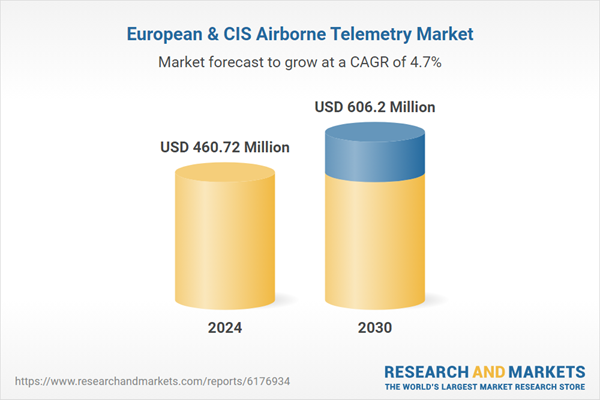Speak directly to the analyst to clarify any post sales queries you may have.
10% Free customizationThis report comes with 10% free customization, enabling you to add data that meets your specific business needs.
Adoption of unmanned aerial systems and next-generation airborne sensors is enhancing telemetry capabilities, enabling more accurate monitoring, testing, and evaluation of defense systems. Technological trends such as miniaturization of telemetry components, integration with AI-driven analytics, and secure high-speed communication links are shaping market dynamics, offering more efficient and reliable data acquisition during flight operations. Opportunities lie in expanding unmanned system networks, upgrading legacy telemetry systems, and developing interoperable solutions that can support multiple platforms across various missions.
Market Drivers
Rising Defense Modernization Programs
Defense modernization programs are accelerating the demand for advanced airborne telemetry systems. Militaries are focusing on upgrading their existing fleets with more sophisticated aircraft, including fighter jets, transport planes, and reconnaissance platforms, which require enhanced telemetry capabilities to monitor performance, test systems, and gather real-time mission data. Advanced telemetry systems enable comprehensive tracking of aircraft parameters such as speed, altitude, engine performance, and weapon system operation during flight tests and operational missions.The integration of telemetry with modern command and control networks allows decision-makers to analyze data in real time, ensuring greater operational efficiency and readiness. Increased budget allocations toward modernization programs and technology upgrades are encouraging defense agencies to adopt more robust telemetry solutions. For instance, in 2024, EU states spent $370B on defence, up 19% from 2023 and projected at $412B in 2025. Investments reached $115B, with $95B for equipment, expected to top $108B in 2025. R&D rose to $14B and should hit $18B in 2025. The defence industry generated $172B turnover, $62B exports, and 627K jobs in 2023. EU programmes added $9.5B via the Defence Fund, $1.8B for mobility, $300M for joint procurement, $500M for ammunition, and a planned $1.6B under EDIP by 2027, with 2,500 SMEs central to supply chains.
Key Market Challenges
High Development and Operational Costs
The development, integration, and operation of advanced airborne telemetry systems involve substantial financial investment. Telemetry components, including sensors, communication modules, and ground control infrastructure, require precision engineering, rigorous testing, and adherence to stringent defense standards. High costs associated with research and development, system calibration, and maintenance limit the ability of some operators to adopt cutting-edge solutions. Additionally, long lifecycle requirements for aircraft telemetry systems necessitate ongoing support, software updates, and component replacement, which further increase operational expenses. Budget constraints within defense organizations may result in prioritization of essential systems, delaying telemetry upgrades. Complex integration requirements with existing aircraft platforms and defense networks demand specialized expertise and resources, adding to the cost burden.Key Market Trends
Miniaturization of Telemetry Components
Miniaturization of telemetry hardware is transforming the airborne telemetry landscape by enabling lighter, more compact, and energy-efficient systems. Smaller sensors, transmitters, and data processing units reduce aircraft payload weight, enhance fuel efficiency, and allow integration into platforms with limited space. Miniaturized components can be installed on unmanned aerial systems, small aircraft, and even high-performance fighter jets without impacting aerodynamics or operational capabilities. Technological advancements in microelectronics, MEMS sensors, and integrated circuits are driving this trend, offering higher accuracy and reliability within a smaller footprint. Lightweight telemetry solutions also reduce power consumption, extend operational endurance, and simplify installation and maintenance. The trend supports modular designs that can be easily upgraded or replaced without extensive retrofitting.Key Market Players
- BAE Systems PLC
- Lockheed Martin Corporation
- L3Harris Technologies Inc.
- Safran SA
- Cobham PLC
- Honeywell International Inc.
- Thales Group
- Kongsberg Gruppen AS
- Orbit Communications Systems Ltd
- AstroNova Inc.
Report Scope:
In this report, Europe & CIS Airborne Telemetry Market has been segmented into the following categories, in addition to the industry trends which have also been detailed below:Europe & CIS Airborne Telemetry Market, By Technology:
- Wired
- Wireless
Europe & CIS Airborne Telemetry Market, By Application:
- Commercial
- Defense
Europe & CIS Airborne Telemetry Market, By Component:
- Receiver
- Transmitter
- Antenna
Europe & CIS Airborne Telemetry Market, By Country:
- Germany
- Russia
- France
- Spain
- Italy
- United Kingdom
- Poland
- Rest of Europe & CIS
Competitive Landscape
Company Profiles: Detailed analysis of the major companies present in Europe & CIS Airborne Telemetry Market.Available Customizations:
With the given market data, the publisher offers customizations according to the company’s specific needs. The following customization options are available for the report.Company Information
- Detailed analysis and profiling of additional market players (up to five).
This product will be delivered within 1-3 business days.
Table of Contents
Companies Mentioned
- BAE Systems PLC
- Lockheed Martin Corporation
- L3Harris Technologies Inc.
- Safran SA
- Cobham PLC
- Honeywell International Inc.
- Thales Group
- Kongsberg Gruppen AS
- Orbit Communications Systems Ltd
- AstroNova Inc.
Table Information
| Report Attribute | Details |
|---|---|
| No. of Pages | 135 |
| Published | September 2025 |
| Forecast Period | 2024 - 2030 |
| Estimated Market Value ( USD | $ 460.72 Million |
| Forecasted Market Value ( USD | $ 606.2 Million |
| Compound Annual Growth Rate | 4.6% |
| Regions Covered | Europe, Russia |
| No. of Companies Mentioned | 10 |









